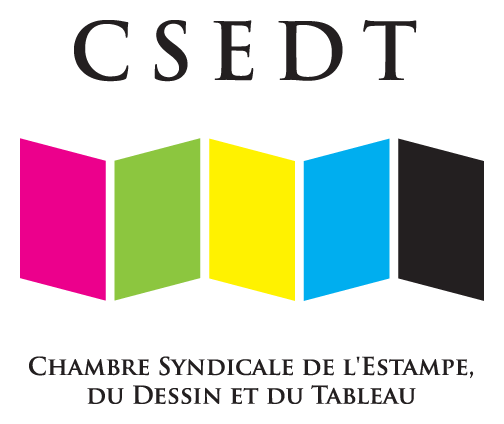Ethics
ABOUT
The Code of Ethics
Artworks designation
The CSEDT advocates compliance with a code of ethics
The designation of Artworks must not be confusing. Their description must be sufficiently precise to allow their identification. It must be as complete as possible, among other things concerning techniques. The members of the Chambre Syndicale agree to abide by the following terminology and designations defined in accordance with the practices of the profession and in compliance with the decree 81-255 of March 3, 1981 on the suppression of fraud in transactions of artworks and collectibles.
Article 1 :
Usual or occasional sellers of art works collectibles or their agents, as well as public or ministerial officers and authorized persons carrying out a public auction must, if the purchaser so requests, issue him/her an invoice, receipt, sales slip or extract of the minutes of the public sale containing the specifications they have advanced as to nature, composition, origin and age of the item sold
[* mandatory information * ].
article 2 :
The denomination of a work or an object, when it is only and immediately followed by reference to a historical period, a century or an era, guarantees the buyer that this work or object was actually produced during the reference period [* seniority – authenticity *]. When one or more parts of the artwork or object are of later manufacture, the purchaser must be fully informed.
article 3 :
Unless clear grounds exist for doubting its authenticity, the indication that a artwork or an object bears the signature or the stamp of an artist entails the guarantee that the artist mentioned is in fact the author. The same effect is attached to the use of the term “by” or “of” followed by the designation of the author. The same applies when the artist’s name is immediately followed by the name or title of the work.
article 4 :
The use of term such as”attributed to” followed by an artist’s name guarantees that the work or object was executed during the production period of the artist mentioned and those serious presumptions refer to it as the probable author.
article 5 :
The use of words such as “atelier de” followed by an artist’s name guarantees that the work has been performed in the master’s workshop or under his/her direction. The mention of a workshop is obligatorily followed by an indication of time on the assumption of a workshop that have been using the same family name over several generations.
article 6 :
The use of words such as “school of” followed by an artist’s name implies the guarantee that the author of the work was the pupil of the master cited, notoriously under his/her influence or benefited from his/her technique. These terms can only apply to a work performed during artist’s lifetime or within less than fifty years after his/her death. When referring to a specific place, the use of the term “school of” ensures that the work has been performed during the life of the designated artistic movement, the time of which must be specified and by an artist having participated in this movement.
article 7 :
The expressions “in the taste of”, “style”, “manner of”, “kind of”, “after”, “manner of”, do not confer any particular guarantee of artist identity, date of the work, or school [* authenticity – seniority *].
article 8 :
Any facsimile, over-molding, copy or other reproduction of a artwork or an object of collection must be designated as such [* labeling – mandatory information *].
article 9 :
Any facsimile, over-molding, copy or other reproduction of an original work of art within the meaning of Article 71 of Annex III to the General Tax Code, executed after the date of entry into force of this Decree , must bear in a visible and indelible way words such as “Reproduction” [* labeling – mandatory information *].
article 10 :
Anyone who contravenes the provisions of articles 1 and 9 of this decree will be liable to fines [* sanctions *] provided for contraventions of the fifth class.
Charter of the original print
The original print is a visual expression voluntarily chosen by the artist, as well as painting, drawing, photography or sculpture.
The author creates a matrix on a support, which can be metal, wood, stone or other.
The author may use one or more different media or techniques to create an original print.
The original print is a artwork that can exist in multiple copies, according to the will of the artist.
Prints that have not been made by the author of the signature or under his/her constant supervision, must be clearly marked as “prints of interpretation”.
The original print is a full-fledged creation of the artist, often made on behalf of a publisher, in collaboration with a printer or workshop.
The original contemporary print is usually signed and numbered, unlike the old print (and sometimes the modern print). However, there are unsigned prints in bibliophile editions, which are nonetheless described as “original”. The authenticity of the signature, the sincerity of the numbering and the truthfulness of the documentation are the responsibility of the print sponsor, the publisher and the artist him/herself or the owner of the work. It is up to the seller, whoever he/she is, to verify the authenticity, to guarantee the documentation of the work he/she markets.
This charter was defined by the SAGA Committee and the “Chambre Syndicale de l’Estampe” in 1996

